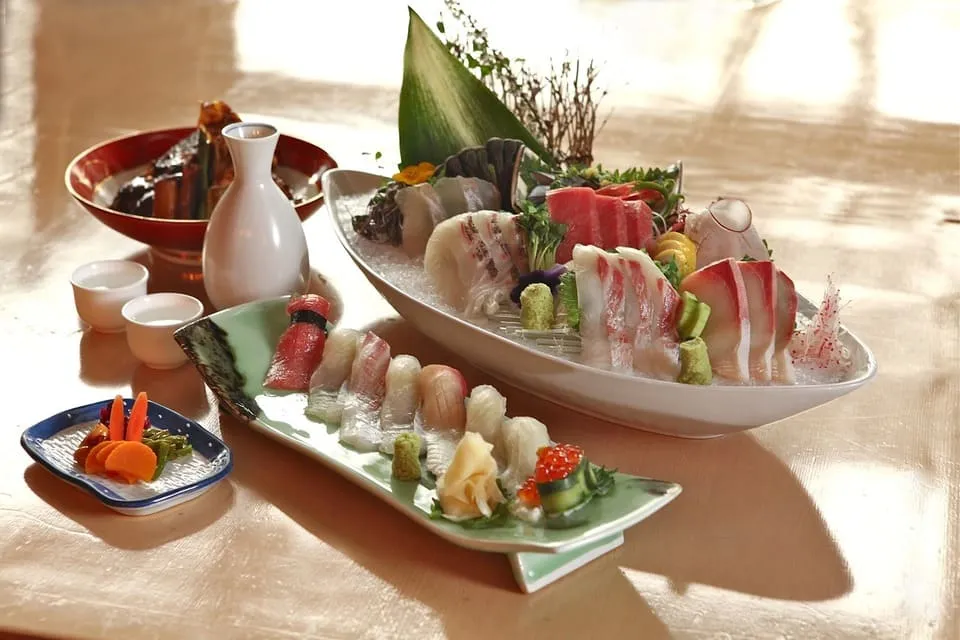Mar 10, 2024, 00:00
Inarizushi is a pouch of fried tofu
Some pizza dough contains sugar, to help its yeast rise and enhance browning of the crust
Inarizushi is a pouch of fried tofu typically filled with sushi rice alone. Tales tell that inarizushi is named after the Shinto god Inari. Foxes, messengers of Inari, are believed to have a fondness for fried tofu, and an Inari-zushi roll has pointed corners that resemble fox ears. Regional variations include pouches made of a thin omelette, fukusa-zushi, chakin-zushi instead of tofu. It should not be confused with inari maki, which is a roll filled with flavored fried tofu. Cone sushi is a variant of inarizushi originating in Hawaii that may include green beans, carrots, or gobo along with rice, wrapped in a triangular abura-age piece. It is often sold in okazu-ya (Japanese delis) and as a component of bento boxes. The lacto-fermentation of the rice prevents the fish from spoiling. When wet-field rice cultivation was introduced during the Yayoi period, lakes and rivers would flood during the rainy season, and fish would get caught in the rice paddy fields. Pickling was a way to preserve the excess fish and guarantee food for the following months, and narezushi became an important source of protein for Japanese consumers. The term sushi literally means 'sour-tasting,' as the overall dish has a sour and umami or savory taste. The term comes from an antiquated し shi terminal-form conjugation, no longer used in other contexts, of the adjectival verb sui (酸い, 'to be sour'), resulting in the term sushi (酸し). Narezushi still exists as a regional specialty, notably as funa-zushi from Shiga Prefecture. Vinegar was first added to the preparation of narezushi in the Muromachi period (1336–1573) for the sake of enhancing both taste and preservation. In addition to increasing the rice's sourness, the vinegar significantly increased the dish's longevity, causing the fermentation process to be shortened and eventually abandoned. The primitive sushi would be further developed in Osaka, where over several centuries, it became oshi-zushi or hako-zushi; in this preparation, the seafood and rice were pressed into shape with wooden (typically bamboo) molds.
The increasing popularity of sushi worldwide has resulted in variations typically found in the Western world but rarely in Japan. A notable exception to this is the use of salmon. The Japanese have eaten salmon since prehistory; however, caught salmon in nature often contains parasites and must be cooked or cured for its lean meat to be edible. On the other side of the world, in the 1960s and 1970s, Norwegian entrepreneurs started experimenting with aquaculture farming. The big breakthrough was when they figured out how to raise salmon in net pens in the sea. Being farm-raised, the Atlantic salmon reportedly showed advantages over the Pacific salmon, such as no parasites, easy animal capture, and could be grown with higher fat content. With government subsidies and improved techniques, they were so successful in raising fatty and parasite-free salmon they ended up with a surplus. Norway has a small population and limited market; therefore, they looked to other countries to export their salmon. The first Norwegian salmon was imported into Japan in 1980, accepted conventionally, for grilling, not for sushi. Salmon had already been consumed in North America as an ingredient in sushi as early as the 1970s. Salmon sushi did not become widely accepted in Japan until a successful marketing partnership in the late 1980s between a Norwegian businessman tasked with helping the Norwegian salmon industry and the Japanese food supplier Nichirei. Multiple-filling rolls inspired by futomaki are a more popular type of sushi within the United States and come in variations that take their names from their places of origin. Other rolls may include a variety of ingredients, including chopped scallops, spicy tuna, beef or chicken teriyaki roll, okra, and assorted vegetables such as cucumber and avocado, and the tempura roll, where shrimp tempura is inside the roll or the entire roll is battered and fried tempura-style. In the Southern United States, many sushi restaurants prepare rolls using crawfish. Sometimes, rolls are made with brown rice or black rice, known as forbidden rice, which appear in Japanese cuisine as well. Per Food and Drug Administration regulations, raw fish, served in the United States must be frozen before serving to kill parasites. Since rolls are often made to order, it is not unusual for the customer to specify the exact ingredients desired (e.g., salmon roll, cucumber roll, avocado roll, tuna roll, shrimp or tuna tempura roll, etc.).
